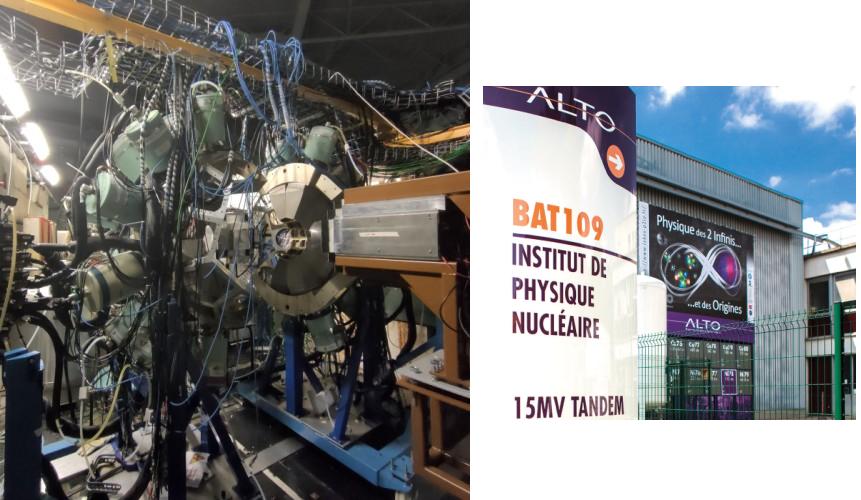Scientific Workshop on nu-Ball2 2024 - Reports from the last campaign and prospects for future experiments
→
Europe/Paris
University of Milan
University of Milan
Via Festa del Perdono 7, Milan, Itlay
, , ,
Description
nu-Ball2 workshop 2024
The next nu-Ball2 hybrid gamma ray spectrometer workshop will be held in-person on the 3-5 of July and hosted by the University of Milano and INFN sez. Milano and sponsored by CAEN S.p.A.
The main aims of the workshop are as follows:
- To present and discuss progress with data analysis and emerging results from experiments in the recent nu-Ball2 campaign with FATIMA, PARIS+DSSD, at the ALTO facility in 2022 and 2023.
- To learn about complimentary parallel activities at various facilities.
- To discuss perspectives and potential future experiments and experimental campaigns.
Following previously successful workshops/meetings in JRC-Geel (2018), University of Köln (2019), University of Warsaw (2019) and online (2021), the goal is to present progress on analysis and results and share knowledge. This in-person workshop will reunite collaborators one year after the conclusion of the experimental campaign. There will be time allotted for discussions on data analysis techniques and problem-solving.
To enhance the workshop's content, experts will present and discuss relevant complementary activities at other facilities (AGATA@LNL, FIPPS@ILL, EXOGAM@NFS/GANIL, GRIFFIN@TRIUMF). Finally, there will be presentations and discussions on potential future experiments and campaigns, addressing key questions such as:
- Future hybrid gamma-ray spectrometers.
- Future spectroscopy of nuclear fission and fast neutron-induced reactions.
- Future experimental campaigns at ALTO and other facilities.
The active participation of postdoctoral fellows and PhD students is strongly encouraged.
There is no registration fee for the workshop, which will start with the afternoon session on the 3rd and conclude after the morning session on the 5th. Please note that lunches and the social dinner scheduled for the 4th are not financially supported.

The Organizing Committee:
- Giorgia Pasqualato, IJCLab (France)
- Jonathan Wilson, IJCLab (France)
- Simone Bottoni, INFN-Milano (Italy)
- Silvia Leoni, INFN-Milano (Italy)
Giorgia Pasqualato
Participants

